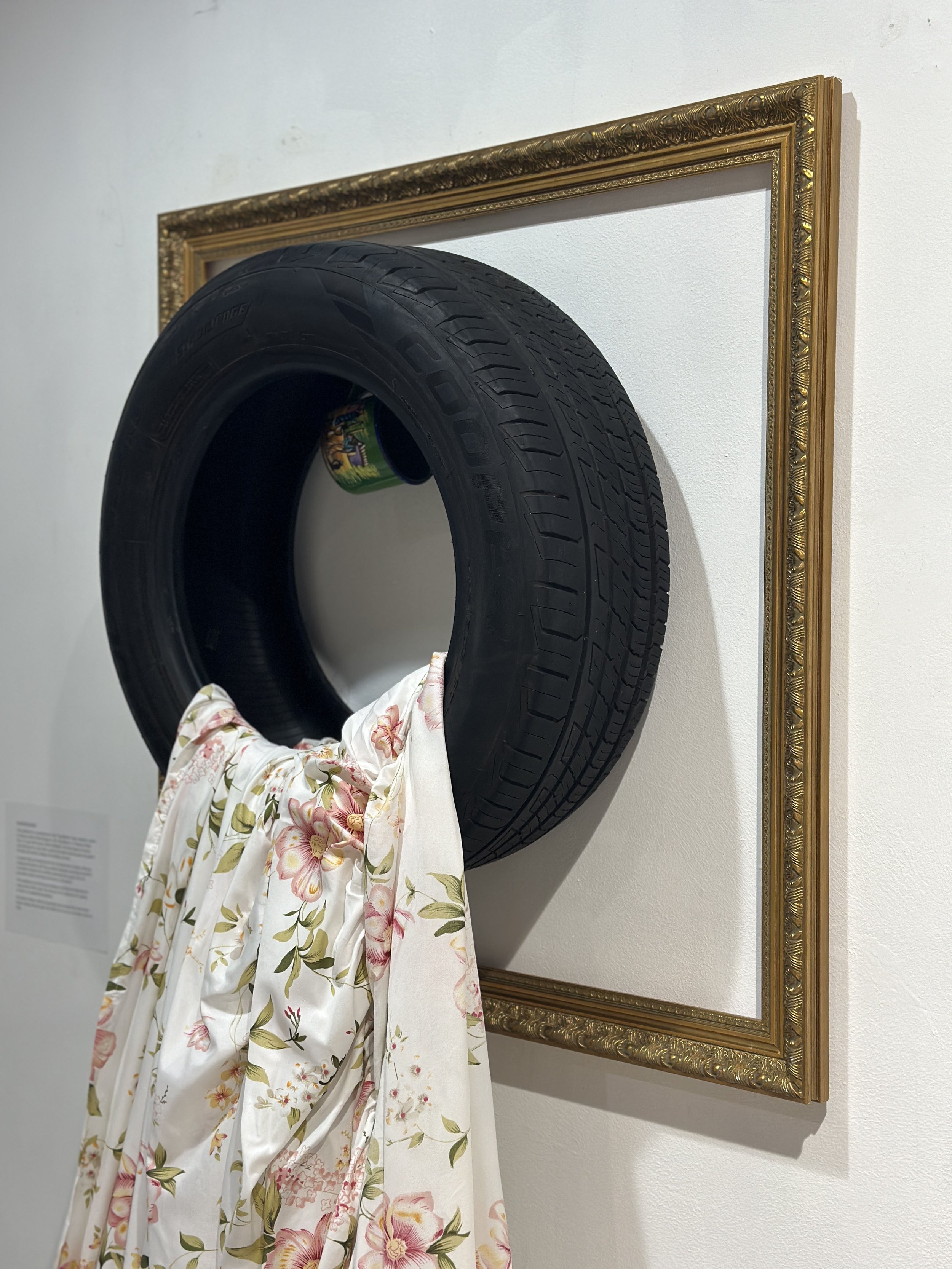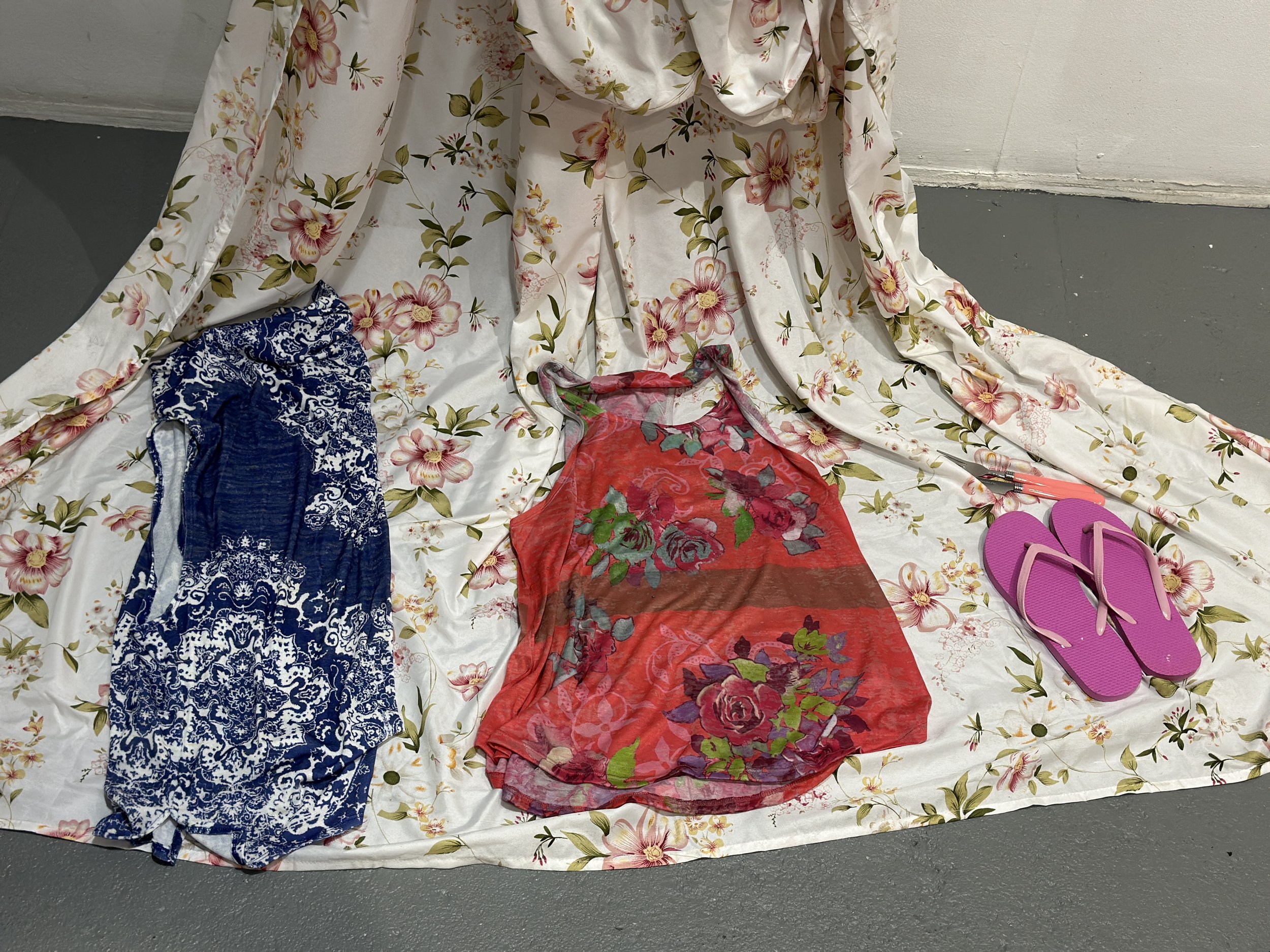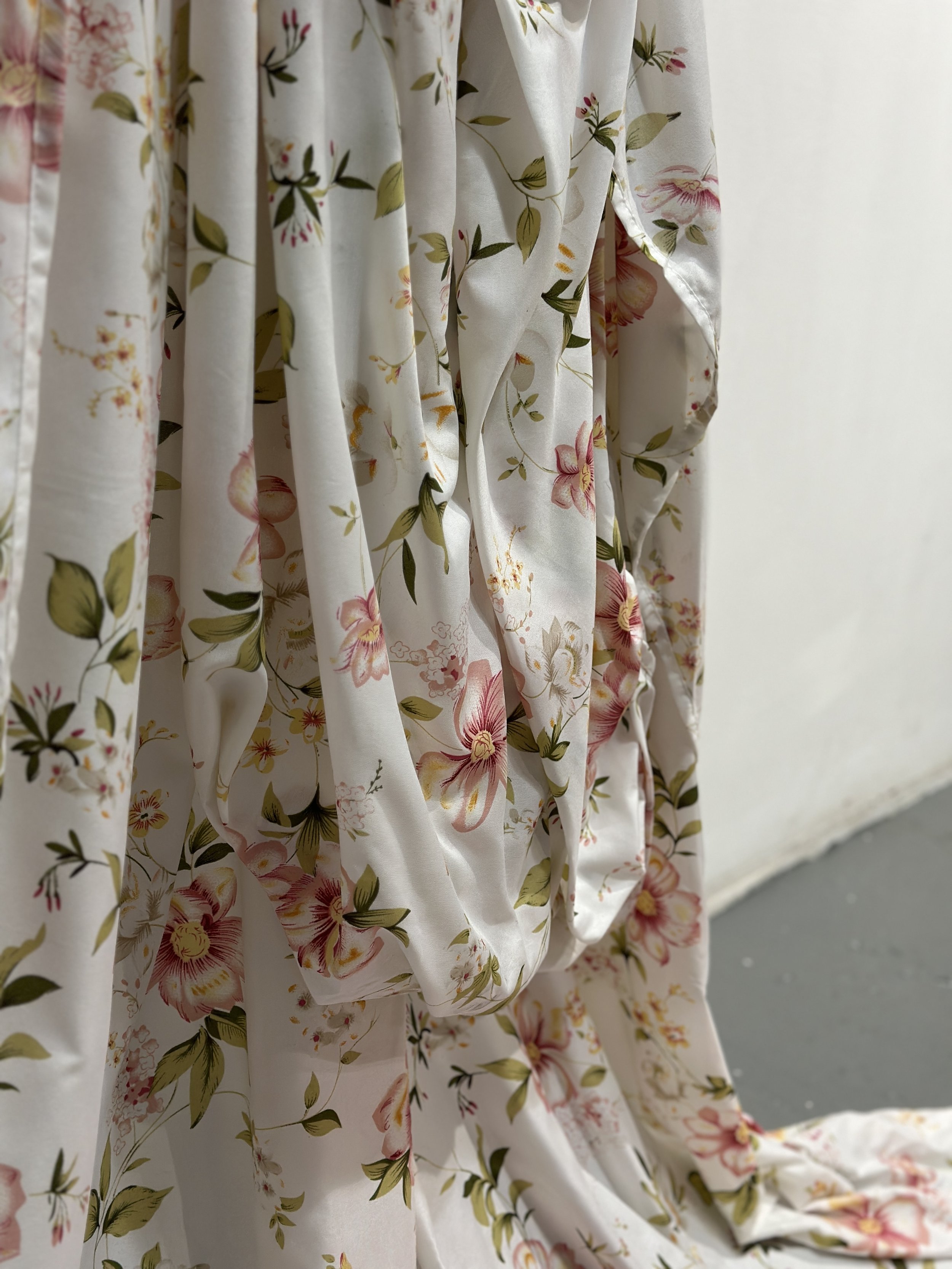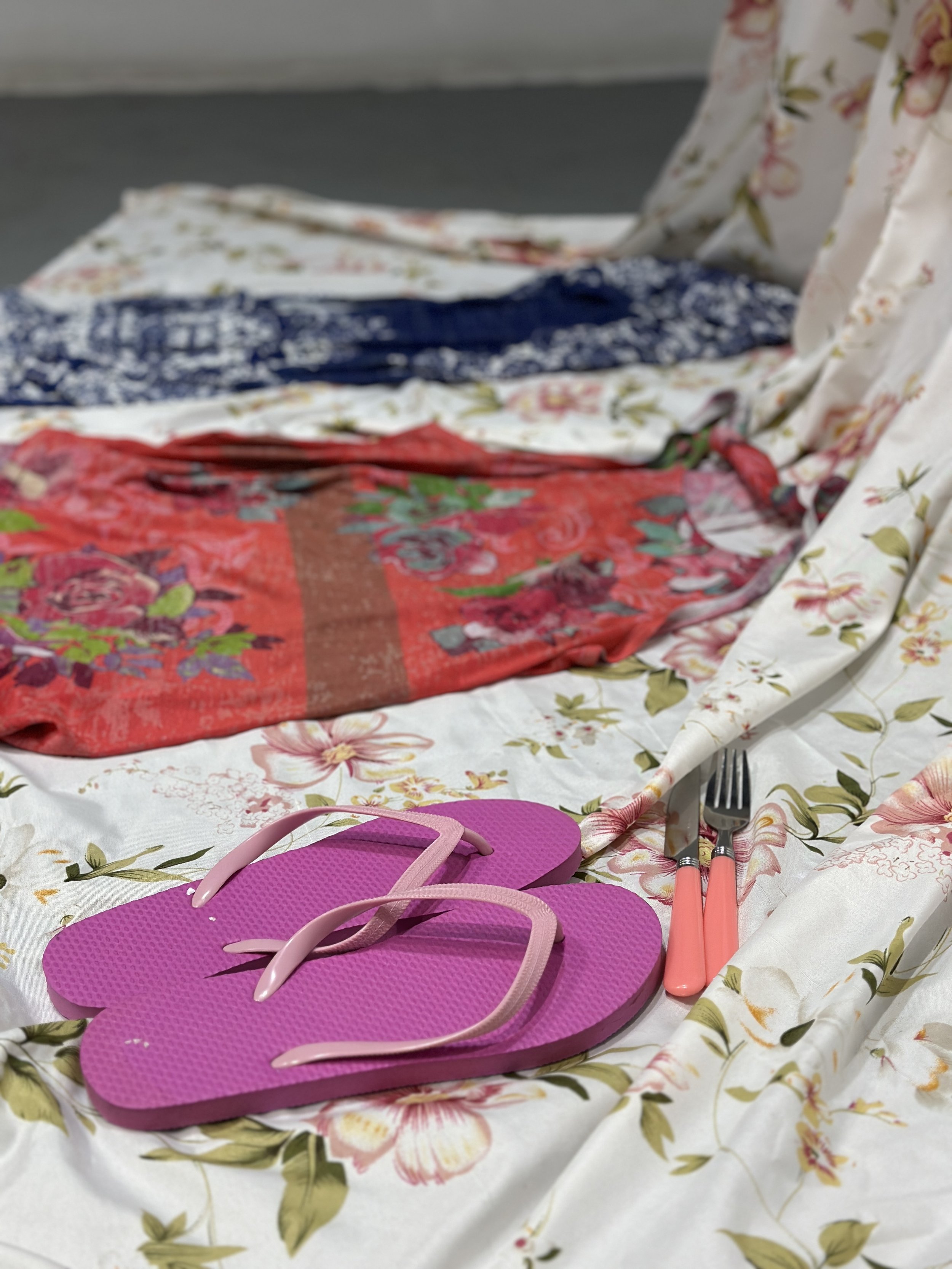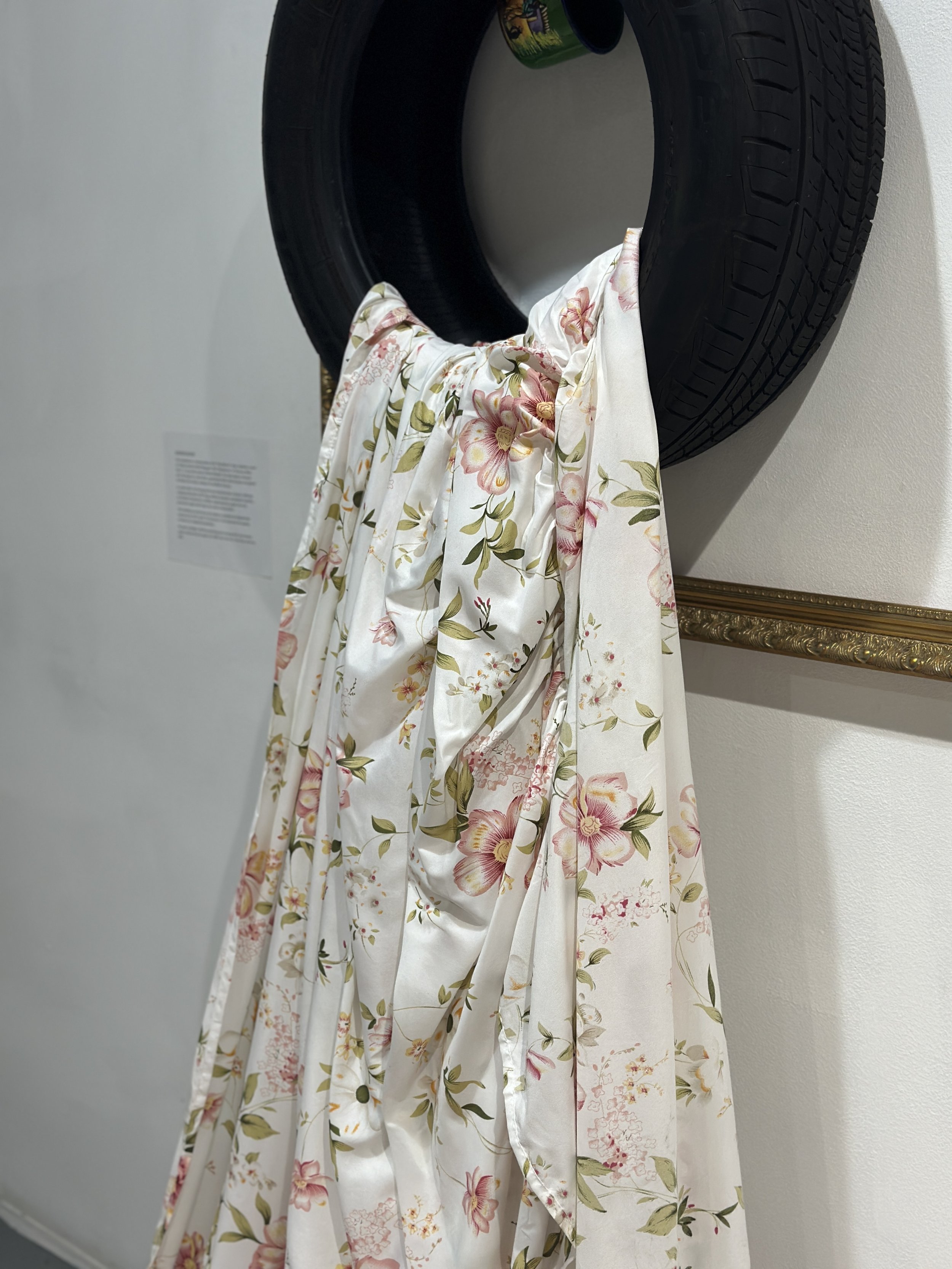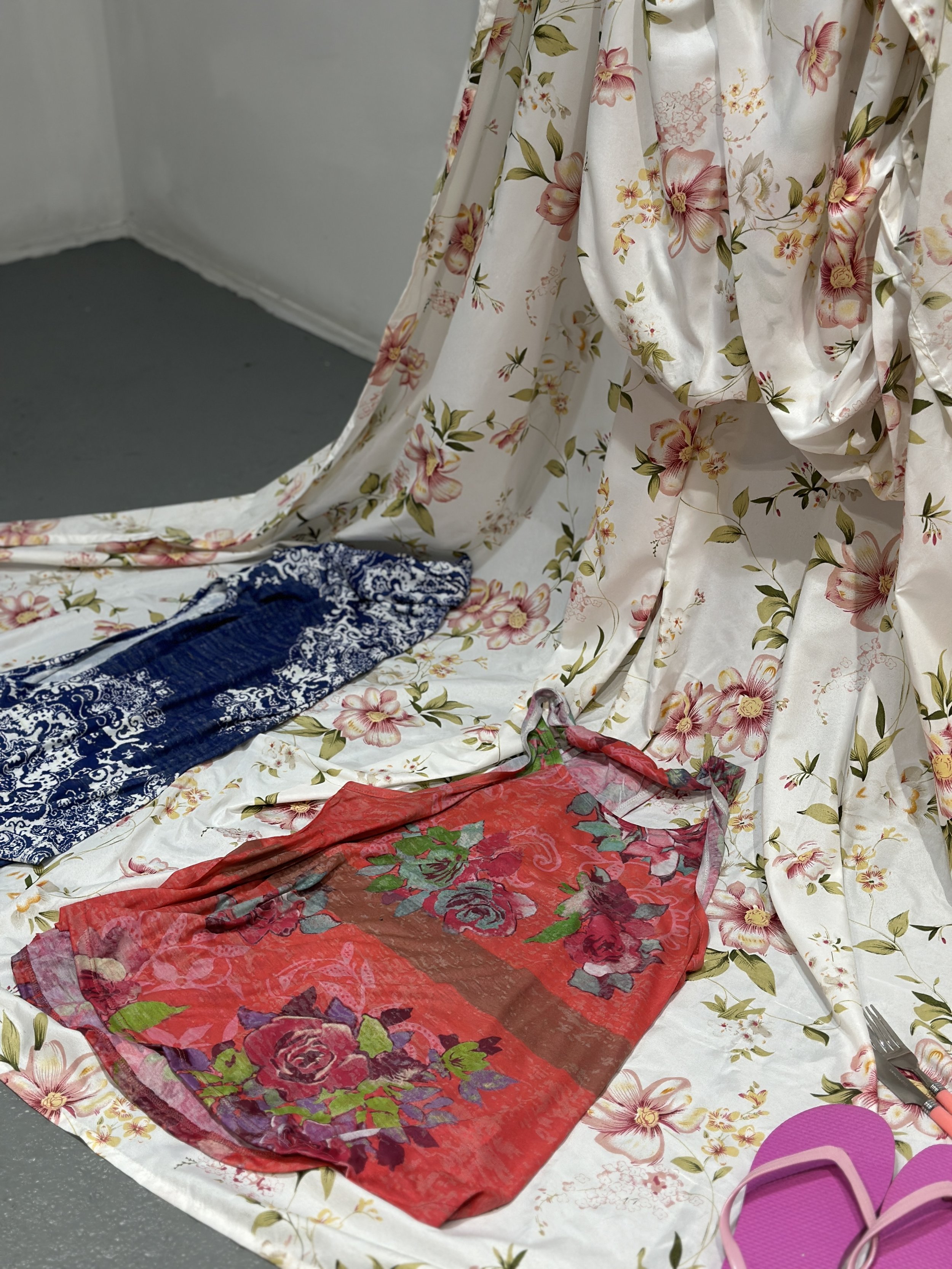MANIFESTASYON, 2024 (“PROTEST” in Haitian Creole)
This installation is a reinterpretation of the "Neg Mawon" statue, originally created by Haitian architect Albert Mangones. The "Neg Mawon," or "Runaway Black Slave," is a powerful symbol of Black liberation. The statue depicts a runaway slave blowing into a conch shell, a gesture that rallied enslaved people and ignited the Haitian Revolution, leading to the abolition of slavery.
In modern Haiti, tire burning has become a prevalent form of protest, reflecting widespread discontent with living conditions, insecurity, and political instability. As decades of protests have unfolded, displacement has surged, driven by government neglect and foreign intervention in local politics.
This installation uses bed sheets and clothing to symbolize the displacement experienced by Haiti's youth. The inclusion of a tire represents the ongoing revolution of a marginalized population.
The bed sheets are associated with rest, comfort, and intimacy. They become stand-ins for shelter, security, and identity when uprooted from their original context. The clothing, meanwhile, evokes the immediacy of survival; garments hastily gathered in the face of uncertainty, the bare essentials carried forward into an unknown life. In 2025, amid increasing instability, violence, and economic hardship in Haiti, many young people, particularly women, are risking everything and leaving behind family, language, and culture to chase even the faintest hope of safety. For women especially, clothing takes on another layer of meaning: it shields the body while also telling stories of protection, dignity, and transformation.

